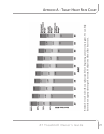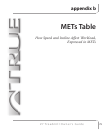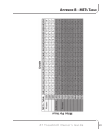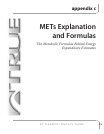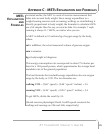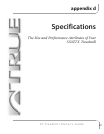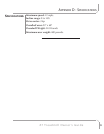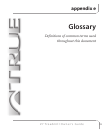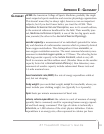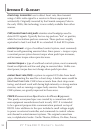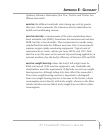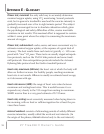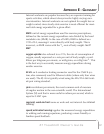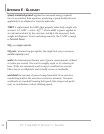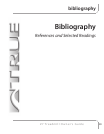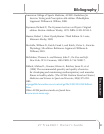
APPENDIX E - GLOSSARY
Z 7 Tr e a d m i l l O w n e r ' s G u i d e
93
ACSM: the American College of Sports Medicine, probably the single
most-respected sports medicine and exercise physiology organization.
This doesn’t mean they’re always right, however, even on important
subjects, but if you don’t know better, you trust the ACSM. Their
Guidelines for Exercise Test and Prescription, now in it’s seventh edition,
is the universal reference handbook for the field. Their monthly jour
-
nal, Medicine and Science in Sports, is one of the two big sports medi-
cine journals (the other is the Journal of Exercise Physiology
).
aerobic capacity
: a measurement of an individual’s potential for inten-
sity and duration of cardiovascular exercise which is primarily derived
from oxygen metabolism. This distinguishes it from anaerobic, or
non-oxygen metabolism exercise. The most common laboratory mea-
surement is maximal oxygen uptake, or VO2max. The other big factor
affecting aerobic capacity is the lactate threshold, which is very dif
-
ficult to measure and thus seldom used. (Number three on the aerobic
capacity factor list is biomechanical efficiency.) Non-laboratory mea
-
surements of aerobic capacity include submaximal fitness tests and
1.5-mile maximal runs.
basal metabolic rate (BMR)
: the rate of energy expenditure while at
rest, but not sleeping.
body weight: your unclothed weight, except for treadmills, where you
must include your clothing weight, too (typically 3 or 4 pounds).
bpm: beats per minute measurement of heart rate.
calorie, calorie expenditure
: the calorie is a unit of measure of energy
quantity that is commonly used for expressing human energy expend
-
ed and food energy consumed. This type of calorie is technically a
kilocalorie, or 1,000 calories of the strict physics definition. Calorie
expenditure is an energy rate, often expressed in calories per hour.
GLOSSARY



